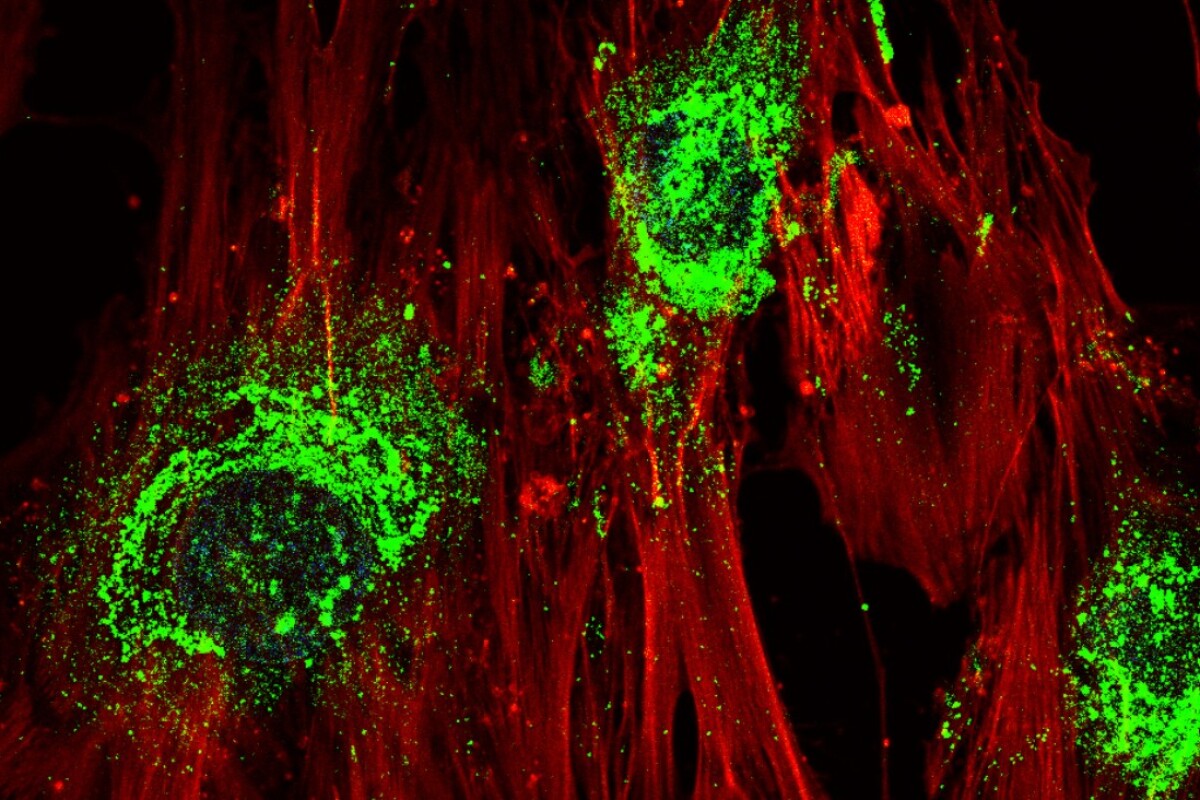
All this has been hinted at in the past, but is is also an incremental improvement and needs plenty of empirical research to produce working protocols.
Advanced healing is a plausible objective and can also includes H3O3 gel which has not made its way into general use either.
Sound waves convert stem cells into bone in regenerative breakthrough
February 21, 2022
A microscope image of stem cells turning into bone cells – green indicates collagen, which the cells produce as a by-product of the process
RMIT
VIEW 3 IMAGES
Regrowing or replacing bone lost to disease is tricky and often painful. In a new study Australian researchers have found a relatively simple way to induce stem cells to turn into bone cells quickly and efficiently, using high-frequency sound waves.
Stem cells have enormous medical potential in helping to regenerate various tissues in the body, but bone has proven particularly hard to work with. Bone originates from what are known as mesenchymal stem cells (MSCs), which mostly reside in the bone marrow. Collecting these is a painful procedure, then converting them into bone cells is difficult to scale up to useful levels.
But researchers from RMIT have now found a faster and simpler way to induce MSCs to turn into bone cells. Previous studies have suggested that the vibrations from sound waves can induce cell differentiation, but it typically took over a week with mixed results. These experiments have been limited to low frequencies, and it was thought that higher frequencies would have little benefit. So for the new study, the RMIT team investigated these higher frequencies.
The team used a microchip that produced sound waves in the MHz range, and directed it at MSCs in silicon oil on a culture plate. They found the optimal setup was to expose these cells to 10-MHz signals for 10 minutes a day for five days, which boosted the levels of certain markers that indicated they were converting into bone cells.

A diagram illustrating how the microchip (left) produces sound waves to induce the stem cells in culture (right) to begin differentiating into bone
RMIT
“We can use the sound waves to apply just the right amount of pressure in the right places to the stem cells, to trigger the change process,” said Leslie Yeo, co-lead researcher on the study. “Our device is cheap and simple to use, so could easily be upscaled for treating large numbers of cells simultaneously – vital for effective tissue engineering.”
Once the stem cells have begun to differentiate into bone, they can be injected into the body at the site of an injury or disease, or coated onto an implant, ready to grow new bone. The team says this process removes the need for drugs that coax stem cells down this path, and makes the whole thing much faster and more efficient. Importantly, the MSCs can be obtained from other parts of the patient’s body, such as fat tissue, which is less invasive than from bone marrow.
The team plans to continue investigating how to scale up the platform for practical use.
The research was published in the journal Small.
No comments:
Post a Comment